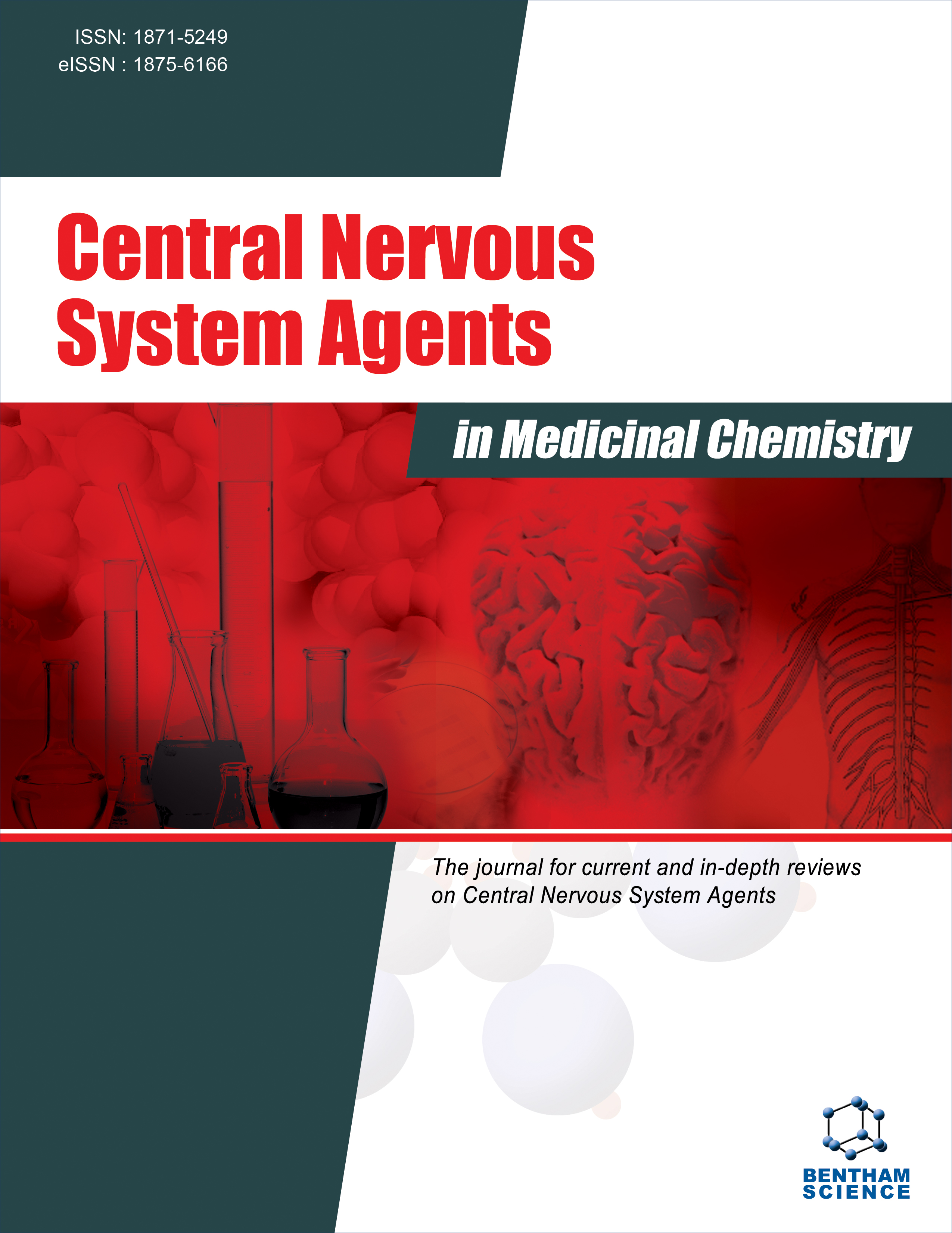- Home
- A-Z Publications
- Central Nervous System Agents in Medicinal Chemistry (Formerly Current Medicinal Chemistry - Central Nervous System Agents)
- Previous Issues
- Volume 11, Issue 4, 2011
Central Nervous System Agents in Medicinal Chemistry (Formerly Current Medicinal Chemistry - Central Nervous System Agents) - Volume 11, Issue 4, 2011
Volume 11, Issue 4, 2011
-
-
Editorial [Hot Topic: Tropical Neurology (Guest Editor: Terezinha C.B. Montelli)]
More LessFailures in the control of infectious diseases in tropical and developing countries are a major challenge for research, such as, diseases that are not preventable by vaccination and which depend on successfully health and social policies. Some of these uncontrolled diseases are now reaching the developed world. Increasing temperatures of the world facilitate conditions for new vectors establishment and disease pathogens trans Read More
-
-
-
HTLV-1-Associated Myelopathy/Tropical Spastic Paraparesis (HAM/TSP): Still an Obscure Disease
More LessHuman T-cell leukemia virus type 1 (HTLV-1) is the ethiologic agent of the neurological disorder HTLV-1- associated myelopathy/tropical spastic paraparesis (HAM/TSP). Although the majority of HTLV-1-infected individuals remain asymptomatic during their lifetime, approximately one percent of this population develops a myelopathy consisting of a chronic inflammation of the white and gray matter of the spinal cord. Glucocort Read More
-
-
-
Neurotuberculosis: An Overview
More LessAlthough pulmonary tuberculosis is the most common form of this disease, neurotuberculosis is more severe and presents higher morbidity and mortality. Its diagnosis continues to challenge physicians all over the world. Contributing to this fact is the nonspecificity of its clinical manifestations, the low density of bacilli in the cerebrospinal fluid (CSF), and the delayed recovery of Mycobacterium tuberculosis throug Read More
-
-
-
Neurocysticercosis: The Enigmatic Disease
More LessNeurocysticercosis (NCC) is an infection of the central nervous system (CNS) caused by the metacestode larval form of the parasite Taenia sp. Many factors can contribute to the endemic nature of cysticercosis. The inflammatory process that occurs in the tissue surrounding the parasite and/or distal from it can result from several associated mechanisms and may be disproportionate with the number of cysts. This discrep Read More
-
-
-
Improving Cognitive Outcome in Cerebral Malaria: Insights from Clinical and Experimental Research
More LessCerebral Malaria (CM) is a clinical syndrome defined by the World Health Organization (WHO) as a potentially reversible diffuse encephalopathy characterized mainly by coma and the presence of asexual forms of Plasmodium falciparum parasites in peripheral blood smears in the absence of other causes of encephalopathy. A wide range of clinical manifestations follows the disease including cognitive, behavioral and motor dy Read More
-
-
-
Arboviral Encephalitis and RNAi Treatment
More LessAuthors: Mauricio L. Nogueira, Mara Correa Lelles Nogueira and Carolina PaccaEncephalitis refers to an acute, usually diffuse, inflammatory process affecting the brain. The clinical hallmark of acute encephalitis is the triad of fever, headache, and altered mental status. The most common and important cause of encephalitis is the infection by a virus although other organisms can cause the disease. This article is a general overview of the most common viral encephalitides, divided into two families, F Read More
-
-
-
L-DOPA and Serotonergic Neurons: Functional Implication and Therapeutic Perspectives in Parkinson's Disease
More LessAuthors: Sylvia Navailles, Manolo Carta, Martin Guthrie and Philippe De DeurwaerdereL-DOPA is the gold standard medication of Parkinson's disease, a neurological disorder consequent upon the degeneration of mesencephalic dopaminergic neurons. The therapeutic efficacy of L-DOPA has been related to its ability to restore dopamine (DA) extracellular levels in the Parkinsonian brain. The origin of the L-DOPA-induced rise in DA has been the object of numerous studies and controversies but the data Read More
-
-
-
Tuberculosis Infections of the Central Nervous System
More LessThe causative agent of Tuberculosis meningitis is Mycobacterium tuberculosis, which is the bacteria that causes pulmonary tuberculosis. Proliferating into the central nervous system occurs from other sites of infection within the body. Brain damage can result from the infection that may lead to abnormal behavior, mental impairments, motor type paralysis, and seizures. Tuberculosis infections of the central nervous s Read More
-
Volumes & issues
-
Volume 25 (2025)
-
Volume 24 (2024)
-
Volume 23 (2023)
-
Volume 22 (2022)
-
Volume 21 (2021)
-
Volume 20 (2020)
-
Volume 19 (2019)
-
Volume 18 (2018)
-
Volume 17 (2017)
-
Volume 16 (2016)
-
Volume 15 (2015)
-
Volume 14 (2014)
-
Volume 13 (2013)
-
Volume 12 (2012)
-
Volume 11 (2011)
-
Volume 10 (2010)
-
Volume 9 (2009)
-
Volume 8 (2008)
-
Volume 7 (2007)
-
Volume 6 (2006)
Most Read This Month
Article
content/journals/cnsamc
Journal
10
5
false
en


